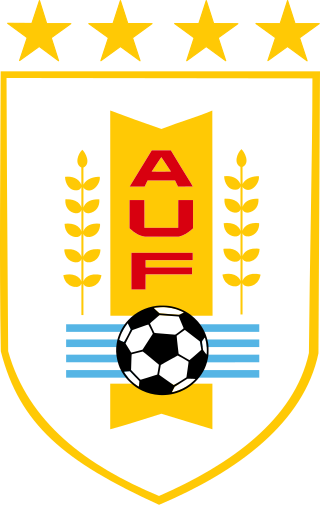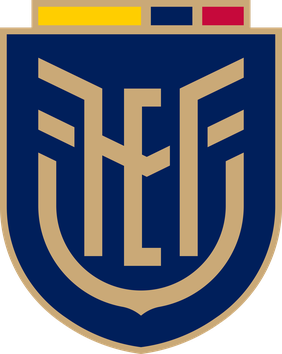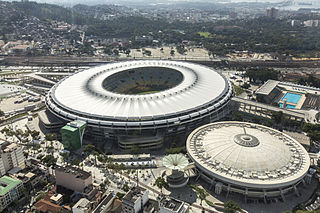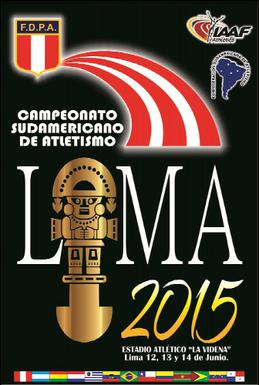The CONMEBOL Copa América, known until 1975 as the South American Football Championship, is the top men's football tournament contested among national teams from South America. It is the oldest still-running continental football competition, as well as the third most watched in the world. The competition determines the champions of South America. Since the 1990s, teams from North America and Asia have also been invited to compete.

The Uruguay national football team represents Uruguay in international men's football, and is controlled by the Uruguayan Football Association, the governing body for football in Uruguay. The national team is commonly referred to as La Celeste.

The Ecuador national football team represents Ecuador in men's international football and is controlled by the Ecuadorian Football Federation (FEF). They joined FIFA in 1926 and CONMEBOL a year later.

Punta del Este is a seaside city and peninsula on the Atlantic Coast in the Maldonado Department of southeastern Uruguay. Starting as a small town, Punta del Este later became internationally known as a resort for the Latin and North American jet set and tourists. The city has been referred to as "the Monaco of the South", "The Pearl of the Atlantic", "the Hamptons of South America","the Miami Beach of South America", or "the St. Tropez of South America".

The National Stadium of Peru is a multi-purpose stadium located in Lima, Peru. Its current capacity is 50,086 seats as stated by the Peruvian Football Federation without the lodges for some thousands more. The stadium was first inaugurated on 27 October 1952 for the 1953 South American Championship—replacing the Stadium Nacional—and is Peru's principal and national stadium. It has hosted three of the six South American Championship/Copa América football competitions held in Peru. It is referred to as the Coloso de José Díaz because of its proximity to a street of the same name. It is the home ground of the Peru national football team. The IPD —a branch of the Ministry of Education—is the stadium's administrating entity. The stadium has undergone several renovations for tournaments such as the 2004 Copa América. The artificial turf was installed for the 2005 FIFA U-17 World Championship. The most recent renovation started in 2010 and concluded in 2011. The re-inauguration ceremony of the renovated stadium was held on 24 July 2011 with a match between the Peru national under-20 football team and the Spain national under-20 football team.

Sport in Uruguay has been an important part of Uruguayan culture, since the early start of the nation. Winners of such important awards such as the FIFA World Cup, the French Open, and Olympic medals, Uruguay has been a constantly successful sports nation in continental and world aspects.

The Uruguay national basketball team represents Uruguay in men's international basketball competitions and it is governed by Federación Uruguaya de basketball, The team has made seven appearances in the FIBA World Cup and the team represents FIBA and FIBA Americas.
The following are the football (soccer) events of the year 1917 throughout the world.

The Paraguay national rugby team is governed by the Paraguayan Rugby Union. They compete regularly in the South American Rugby Championship, but have yet to qualify for the Rugby World Cup.

The Chilean national rugby union team represents Chile in men's international rugby union; it is organised by the Chilean Rugby Federation. Nicknamed Los Cóndores, they play in red and white jerseys. They are currently ranked 22nd in the World Rugby Rankings, making them the third highest-ranked nation in South America.

Pablo Adrian Lemoine is a former Uruguayan rugby union player and former head coach of the Uruguayan national rugby team and German national team. He is now the head coach of the Chile national team.

Association football is the most popular sport in almost all South American countries. There are a wide range of sports played in the continent of South America. Popular sports include rugby union, baseball, basketball, tennis, golf, volleyball, hockey, beach volleyball, motorsports and cricket. South America held its first Olympic Games in Rio de Janeiro, Brazil in 2016. Two years prior to this, major cities in Brazil hosted the 2014 FIFA World Cup.
Uruguay national under-20 football team represents Uruguay in international football competitions such as FIFA U-20 World Cup and the South American Youth Football Championship.
The 2009 FIFA Beach Soccer World Cup CONMEBOL qualifier, also later and commonly known as the 2009 South American Beach Soccer Championship, was the third Beach Soccer World Cup qualification championship for South America, held from March 11–15 in Montevideo, Uruguay.
The South American Cross Country Championships is an annual continental cross country running competition for athletes from South America or, more specifically, member countries of CONSUDATLE. It was first held in 1986, making it the oldest of the continental cross country championships. The event is typically held in late February or early March.
The 1st South American Under-23 Championships in Athletics were held in Barquisimeto, Venezuela, at the Polideportivo Máximo Viloria on June 26–27, 2004.
The Central American and Caribbean Cross Country Championships was an annual Cross country running competition organized by the CACAC for athletes representing the countries of its member associations. The competition was established in 1983 following a proposal of Wallace Williams from the Virgin Islands, then secretary of the CACAC. The rationale was that also smaller countries without adequate athletics' facilities could host such an event. The approval for the competitions' implementation was given during the 1982 CACAC meeting in Havana. The first championships were to take place in 1983 on the Virgin Islands, but because of the US invasion of Grenada, the event was postponed and relocated to Puerto Rico.
The FIA CODASUR Rally Championship is an international rally championship which is run by Confederacion Deportiva Automovilismo Sudamericana (CODASUR) under the auspices of the FIA and held across South America, although some events in the northernmost reaches of South America compete in the NACAM Rally Championship zone rather than Codasur.

The 2015 South American Championships in Athletics was the 49th edition of the biennial athletics competition between South American nations. The event was held in the Peruvian capital of Lima from 12 to 14 June at the Videna Stadium. It was the eighth time Lima hosted the event, having last done so for the 2009 edition. A total of 44 events were held, evenly divided between the sexes, continuing with the event programme established in 2001.
The South American Cricket Championship is an international limited-overs cricket tournament featuring national teams from South America and other invited national sides from outside South America, currently played annually but until 2013 was usually played every two years. The first men's event was held in 1995 and a women's tournament started in 2007. The two tournaments have been played simultaneously or back-to-back since 2013.










